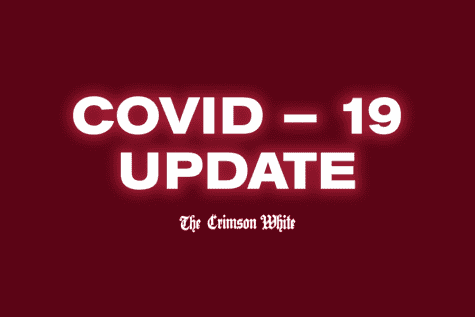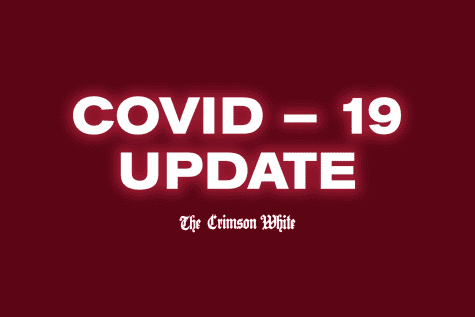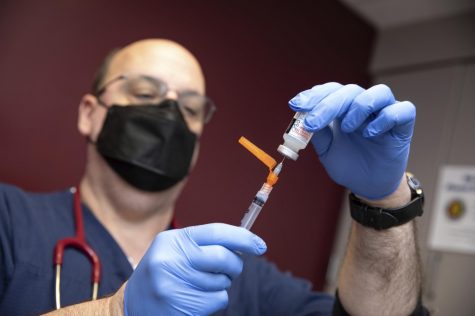As coronavirus saturates media, UA responds
March 5, 2020
The University of Alabama, like all institutes of higher education, is preparing for the unknown development of the coronavirus as time goes on.
No one in the UA community is known to have been infected by the virus. According to the University’s health info website, students are continually updated as the situation develops.
As of Wednesday, March 4, the University has canceled all University-sponsored international travel for those departing this month and has suspended travel set to occur after March.
“Effective immediately, UA is canceling all university-sponsored international travel that is scheduled to depart in the month of March,” a campus-wide email read. “Faculty, staff and students MAY NOT TRAVEL anywhere outside the United States for university business or academic purposes (“university-sponsored travel”), including but not limited to study abroad or other international academic work, research or grant activity; service projects; internships; conferences or presentations; teaching or training; performances; recruiting; or athletic competitions.
“Additionally, university-sponsored travel outside of the United States that is scheduled to depart after the month of March is suspended effective immediately. Regarding future university-sponsored travel outside of the United States beyond March, this is a complex decision that is based on new and evolving information. Decisions on those future programs are ON HOLD and will be addressed as soon as possible.”
The CDC has issued a statement that asks institutes of higher education to consider postponing or canceling their student foreign exchange programs. According to AL.com and a local student-run news team, Auburn has in fact canceled its study abroad programs, bringing all faculty and students back to the U.S. This move came four days after the University issued a statement suspending travel to Italy, Japan, Iran, South Korea and China. CNN has reported that other institutions, such as the University of Georgia and the University of Colorado, have followed suit.
In the CDC’s statement to higher education institutions, the word “consider” is bolded three times and the language is heavy in asking institutions to think carefully and remember that COVID-19 is dynamic and unpredictable. It can work both ways. To bring back students and faculty from a large institution can be a difficult decision, especially if COVID-19 recedes and doesn’t continually affect certain countries.
While UA students and faculty grapple with cancellations, the uncertainty surrounding COVID-19 continues to dominate media coverage nationwide.
NEWS COVERAGE
It’s very likely students have overheard a conversation, participated in one or read something on the coronavirus in the last two months. From The New York Times to Buzzfeed, many news outlets have created newsletters and dedicated platforms to coronavirus coverage.
As the CDC has issued more testing kits in the U.S., more updates saturate mainstream media. CNN has created a “Coronavirus: Fact vs. Fiction” podcast, alongside other podcasts like “Viral: Coronavirus.” It is likely that the cases of infection will rise, and with that, the number of people who will need medical care, but the severity and scope of the virus are all unknown and depends in part how nations and organizations react.
Because of the heightened coverage, the lines of “outbreak” and “pandemic” can effect stereotypes and create fear around groups of people from a geographic area. The Asian American Journalist Association has noted for journalists and news organizations to use care when reporting on the virus, including the use of images from China and the use of geographic labels for viruses to avoid stigmatization of the people of that region.
[Read more: Chinese students discuss coronavirus’ impact]
Some of the coverage has sparked fear. A Yahoo News report has called Seattle a “ghost town.” NPR has reported that San Antonio declared a state of public emergency over the release of patients who were aboard the Diamond Princess cruise ship and held at a nearby Air Force base. More locally, the wife of a UA graduate student took to CBS 42, claiming that she was worried for his safety after the University refused to suspend a study abroad trip to South Korea and Cambodia.
“University officials carefully monitor federal and other guidance, including information provided by the World Health Organization, Department of State, and Centers for Disease Control and Prevention,” the school responded. “The University and UA System have comprehensive plans to address issues that may affect our student populations, including infectious disease. Plans address travelers and include comprehensive traveler notification and assistance services in the countries in which they are traveling.”
RISKS
Despite some areas being more affected than others, the CDC has determined that people in the U.S. are largely not at immediate risk of being infected. Some have compared this virus to the Spanish flu, such as science reporter and long-time reporter on epidemics, Donald G. McNeil Jr., on NY Times podcast The Daily:
“This one reminds me of what I have read about the 1918 Spanish influenza,” McNeil Jr. said. “And the reason I say that is because, right now, the only measure we have for the death rate from this flu is a study that the Chinese did of the first 45,000 cases. And of those, 80% were mild, 20% were various degrees of seriousness, up to critical and on a respirator and in organ failure, and 2.3% died. Now, 2.5% mortality is about the mortality rate of the 1918 flu.”
It’s unknown if the coronavirus will balloon to the scale of the 1918 influenza pandemic, which has been the most deadly pandemic in recent history and infected 500 million lives, one-third of the world population at the time. It’s estimated that 30-50 million people died from the virus. It’s also difficult to completely compare the 1918 flu to coronavirus, as healthcare workers didn’t possess antibiotics or a vaccine, and were limited to non-pharmaceutical interventions such as isolation, quarantine, good personal hygiene or use of disinfectants.
The World Health Organization (WHO) has continued to state that the mortality rate for coronavirus is unknown. Furthermore, influenza is still a larger threat to people in America than COVID-19. The CDC estimates that there have been 32 million illnesses, 310,000 hospitalizations and 18,000 deaths from the flu this season, which has lasted longer than the coronavirus has been known. A large difference between the two viruses is that there is a vaccine for influenza, whereas no vaccine exists for COVID-19. For now, it’s largely up to individuals and the leaders of organizations to consider travel abroad as a viable or safe option.
Here are the facts around the coronavirus and in relation to universities:
- Coronaviruses are part of a large group of viruses that cause respiratory infections, including what most people know as the common cold. Corona on a molecular level looks like a crown, and corona means “crown” in Latin. There are many types of coronaviruses, including MERS and SARS, which had outbreaks in 2003 and 2012.
- When viruses such as this one make a leap from animal to human, this is called a zoonosis, also known as spillover. David Quammen’s 2012 book “Spillover” covers important zoonotic diseases in history. It is not yet known what animal COVID-19 has come from.
- Transmission: Exact dynamics and methods of transmission are yet to be determined. Sneezing and coughing can transmit the virus, as can contaminated surfaces like tables, doorknobs and light switches. Those most at risk are those in animal markets, healthcare workers or family members caring for the infected.
- Symptoms: Symptoms include fever, cough and shortness of breath. More severe cases include pneumonia, kidney failure and death. Researchers at John Hopkins University have created an interactive map that keeps global statistics of those infected, recovered or who have died. Over 94,000 have been confirmed infected, and over 3,000 have died globally.
- Treatment: A polymerase chain reaction (PCR) test provides the diagnosis. There’s currently no specific medication for the virus or a vaccine. A vaccine is in development but could take anywhere from six months to a year to be ready for safe distribution.
- Prevention: Cover your mouth when sneezing or coughing. Avoid close contact with individuals who are sick or ill. Cook food thoroughly and avoid unnecessary contact with animals. If you are sick, stay home and seek care early.
Editor’s Note: This story has been corrected to note that the CBS article was about a graduate student, not a professor.









